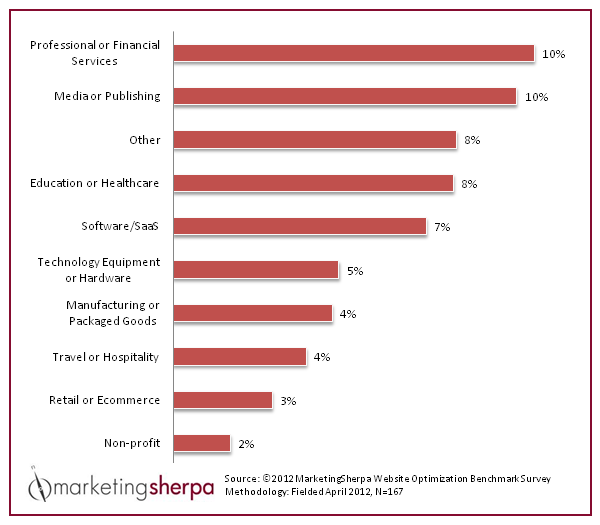While you may think there is
nothing particularly exciting about your daily morning Web-surfing session,
there are probably lots of marketing professionals who would jump at the chance
to hover over your shoulder, observing your every mouse click. But, that’s
creepy. So, instead they will view your activity as a data point on a Web
analytics report. Whether you are reading the news or buying a gift, you leave
a trail of data that, when combined with lots of other data, provides valuable
information that has the potential to help a company increase its readership or
boost its sales.
For example, do a large percentage
of people exit the site upon reaching a specific page? If so, how can that page
be modified to encourage continued browsing within the site? Are people more
likely to make a purchase after their third visit to the site? If so, how can
new visitors be enticed to return again soon?
The Holy Grail of Web analytics
is the conversion, which is a
desired outcome. Conversions vary depending on the website and its goals. A
retailer likely wants Web visitors to make a purchase, while a restaurant might
want them to make a reservation through its online system. A company selling
items or services not available for online purchase (think real estate or
consulting) could encourage visitors to complete a registration form to receive
a free white paper. Purchases, reservations and forms are all types of
conversions.
You might be wondering what the average
conversion rate is. Well, it varies by industry from 2 to 10 percent, as
noted in the chart below (MarketingSherpa, 2012).
For an e-retailer (think Target.com or Overstock.com), the average conversion rate is a measly 3 percent. In other
words, for every 1,000 visits to the site, only 30 result in a purchase. Even a
small increase in this percentage could have a significant affect on a
company’s bottom line, hence the great focus on this metric.
GrowthGiant
looked at the 10 e-retailers with the best conversion rates and shared some
“best practices.” It found that many of them create a sense of urgency,
encouraging visitors to buy now to take advantage of a limited-time offer, such
as a discount or free shipping. “This psychological feeling of missing out is
great for increasing conversions and pushes a lot of people over the line”
(GrowthGiant, 2012, “Urgency drives conversions”).
For example, those in the market
for a laptop will likely visit several websites to research features and
compare options, but this deal for $70 off at Office Depot, valid for “72 hrs
only!”, might be just the incentive needed to move an online shopper from
browser to buyer, resulting in a conversion for Office Depot.
Another recommendation from
GrowthGiant is to make sure you have good photos that give viewers a real sense
of what they would get if they were to go through with the purchase. “[Photos
are] where customers spend most of the time when deciding on the purchase”
(GrowthGiant, “Great photos”). How do you know if people are focused on your
photos? A Web analytics tool can tell you how many people click for a larger
view of the photo or, if offered, additional views.
Recently, Amazon’s use of photos
made me feel confident enough to order a scarf from the site. As you can see
from the screen shot below, you can use the thumbnails on the left to view the
scarf from seven different angles, and then use the thumbnails on the right to get
a close-up view of the various colors available.
Of course, a conversion can be
lost anywhere along the purchasing pipeline, including at the online shopping
cart or checkout, if it is poorly designed. KISSmetrics
offers several tips for increasing the likelihood that an online shopper will
follow through with her purchase, such as simplifying the checkout process so
it requires as few clicks as possible, and including a security seal, like the
one below, to make users feel more comfortable sending their credit card numbers
into cyberspace.
What are some factors that make you more or less likely to be part of
the 3 percent of retail website visitors to complete a conversion?
References
GrowthGiant. (2012, July 2).
Conversion rate optimization tips from top 10 online retailers.
Retrieved November 3, 2012 from http://www.growthgiant.com/blog/conversion-rate-optimization-top-10-online-retailers/
KISSmetrics. 40 checkout page
strategies to improve conversion rates. Retrieved November 3, 2012 from http://blog.kissmetrics.com/40-checkout-page-strategies/
MarketingSherpa. (2012, Oct. 23)
Marketing Research Chart: Average website conversion rates, by industry. Retrieved
November 3, 2012 from http://www.marketingsherpa.com/article/chart/average-website-conversion-rates-industry#





Good post.
ReplyDeleteI am more likely to complete a purchase when the retailer already has my information on file, like you mentioned "simplifying the checkout process so it requires as few clicks as possible." I hate having to dig out my credit card, type in the numbers, fill out my address, etc. When it is stored for me, I am more likely to go back and make another purchase.
Another way to increase the likelihood of completing a purchase is having current coupon codes available on the checkout page so I don't have to go digging around, looking for the coupon. If it was mailed, or emailed to me but I can't find it, I will leave the site, intending to go back once I've found the code. But if I can't find the code, I won't go back.
Great points! One part of me is always a bit nervous about my credit card number being saved so many places online...but another part of me loves the convenience. We are so used to having everything at our fingertips these days.
ReplyDeleteVery interesting post. A large number of positive, detailed reviews of an item helps to "convert" me. I also agree that the simplicity of the checkout process helps. My biggest turnoff? A checkbox that's already checked to sign me up for more emails.
ReplyDeleteThanks for the comment, Heather! I agree that having newsletter opt in boxes already checked off is annoying. Seems sneaky...
Delete